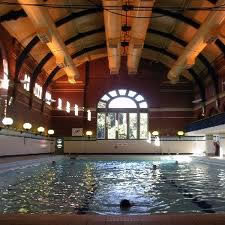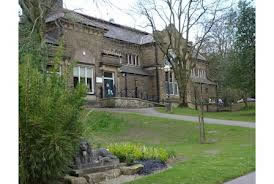
Glossop Pool: troubling times for clubs
Against the tide: tales of a local swimming club
Adam Higgins goes poolside in Glossop to talk to Alan Fennell about how his club is facing the future in the wake of the legacy promises of London 2012.

Glossop Pool: troubling times for clubs
The sport of swimming has been a part of the Olympic itinerary since 1896 and its history can be traced back to the ancient eras of Greece and Egypt but it is now considered a necessary life skill. More than 20 million people swim every year, whether for pleasure, health or the competitive edge, and it has become a mandatory part of a child’s physical education; many children are then encouraged to join clubs where they receive the dedicated grassroots coaching that has developed some of the nation’s finest swimmers. However, with national governing bodies laying out an innovative vision for the sport’s future, it appears that many traditional local clubs are facing a difficult fight against closure.
Glossop swimming club is among them and Alan Fennell MBE, an honorary life member of Glossop Amateur Swimming Club and the immediate past president of Derbyshire Amateur Swimming Association, fears that the plans to revolutionise the sport represent a threat to the next generation of swimmers. Still involved in the club 75 years after he first joined at the age of eleven, Fennell is concerned that the opinions of many whose perspective should still matter are being ignored.
“Glossop Amateur Swimming Club is a non-profit-making organisation with over 200 registered members aged between 5 and 16, although there are sessions offered to adults,” he said. “Children from toddler upwards are taught how to swim and then signed on by a club whose members are coached by DC Leisure Management in partnership with High Peak Borough Council. All of the coaches and helpers are fully trained volunteers, while disabled swimmers are also given the opportunity to train and compete through the association.
“During Margaret Thatcher’s reign as prime minister throughout the 1980s, corporationcs such as DC Leisure maximised their income through holding sole responsibility for the management of pools as other leisure services struggled to formulate grounds for a contract. This led to stricter requirements through the emergence of 50m pools, as opposed to 25m, across the British Isles. These are considerably more expensive to maintain. As a result a large number of smaller pools were closed down to reduce running costs, with clubs merging and trained staff joining others in the north west. Facilities such as the 50m pools in Stockport, Manchester and Wigan act as centres of excellence for elite swimmers where competition is provided by the Manchester and District Water Polo and Swimming Association.”
According to the Amateur Swimming Association (ASA), every citizen in England has access to a swimming pool within five miles of their homes. However, with a number of pools in the north west facing indefinite closure as clubs and local authorities struggle to balance the books, Fennell fears this may not be the case much longer.
“The ASA’s vision to raise the standard of swimming has placed immense pressure on small clubs such as Glossop, while more money has been pumped into elite swimming in order to train squads and get medals at international level,” Fennell said. “Coming at a time where the national lottery was pumping more money into sport, it introduced a two-tier system, splitting grassroots from the elite swimmers. This was based on which swimmers were more committed and prepared to work hard to achieve success in the sport and completely revamped the competitive system.”
British swimming is taking a large funding cut from UK Sport following their poor performance at the London 2012 Olympics, where they failed to meet the minimum medal target of five. Despite GB’s record number of finalists, established performers such Tom Daley and Rebecca Adlington failed to reach their potential while their counterparts from overseas flourished. Along with the success of other sports in the summer extravaganza of medals, this has placed increased pressure on the introduction of new coaching structures.
As the principal governing body of swimming, the Amateur Swimming Association describes itself as “a vibrant, modern governing body providing leadership to the industry of swimming in so many ways”. First established in 1869, they support over 1,200 affiliated clubs, organising competition throughout England through various schemes from grassroots to elite level. Working through UK regions, the ASA is dedicated to giving people more opportunities to swim for health and fun while individual clubs strive to train swimmers in preparation for competitive action. However, Fennell’s concern is that the summer set-back will have adverse repercussions on grassroots swimming, notably through the training methods utilised.
“The ASA takes pride in having stable relationships with swimming clubs,” Fennell explained, “but there is a tainted connection with the ASA and clubs such as Glossop as the national body prefers to deal with DC Leisure rather than separate swimming clubs. A wealth of amateur clubs earn [significant amounts] through teaching youngsters to swim. However, money remains a long-standing issue as paid teachers, employed by DC Leisure, cost £600 to train to a Level 1 standard. All clubs must have a Swim 21 accreditation with standard procedures, including an action plan made in the event of an emergency, a solid ratio of coaches to swimmers, while the club records personal details of all employees, including a CRB check, license details and ASA membership. In addition, a club management committee member must have undertaken an ASA-approved equity course.”
For many years, clubs were run based on their own unique initiatives but the ASA now has ideas of its own to take modern swimming through its next phase of development, with clubs expected to follow suit. The governing body has set out objectives in its strategy to ensure fair learning opportunities, offer water-based fitness activities, personal health goals and the nation succeeding on the world swimming stage.
Fennell explained that the principal concerns of many club committees surround funding. Funds are distributed by the ASA to individual county clubs via regions but as belts are tightened, swimming is falling foul of the budget squeeze, particularly in areas where facilities are inadequate. While the ASA is forecasting a significant decrease in financial backing in the next three years, grassroots swimming does not have a dedicated director or representative at board level and Fennell is concerned that governing bodies are on the cusp of using their supremacy to impose their own contemporary image of the sport and vanquish the traditional origins of swimming.
It seems that many in swimming are questioning how many clubs will be able to manage with the persistent pressure from above. While swimming has progressed significantly over the last ten years, some within our swimming clubs are worried that the challenges they face in the next few years are bigger than ever.
Adam Higgins is a freelance journalist with a professional interest in sport.
The Leisure Review, December 2012
© Copyright of all material on this site is retained by The Leisure Review or the individual contributors where stated. Contact The Leisure Review for details.
Download a pdf version of this article for printing
